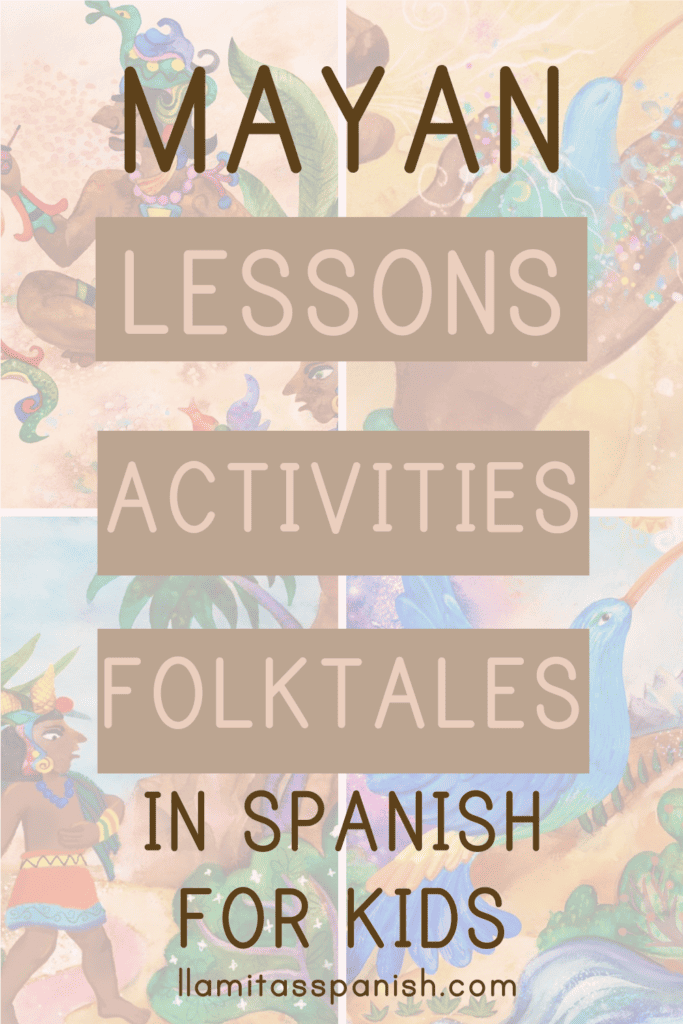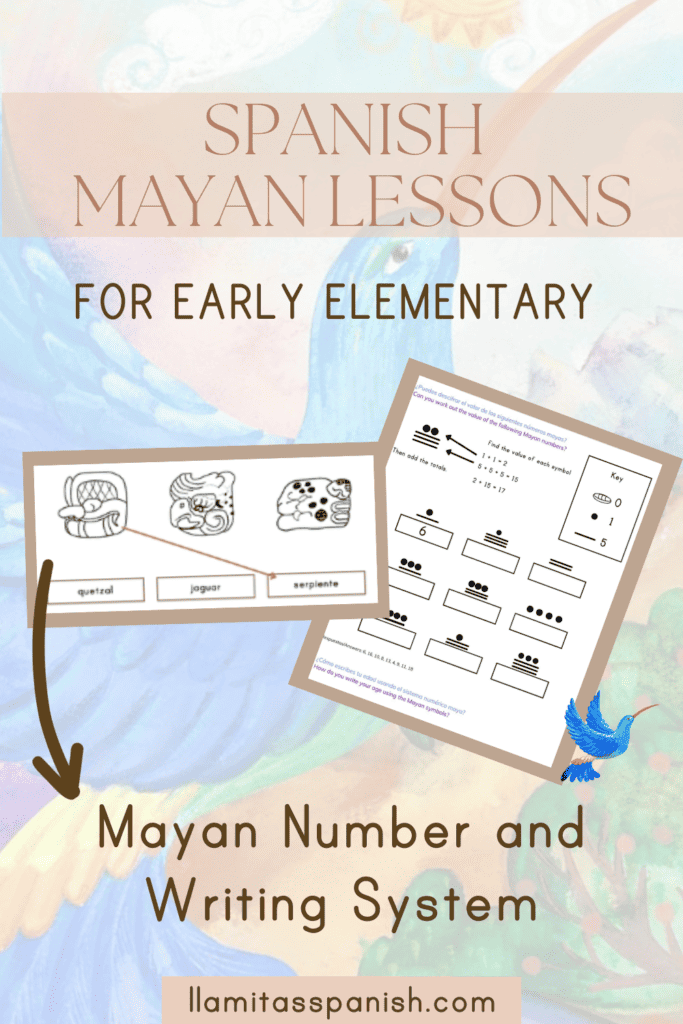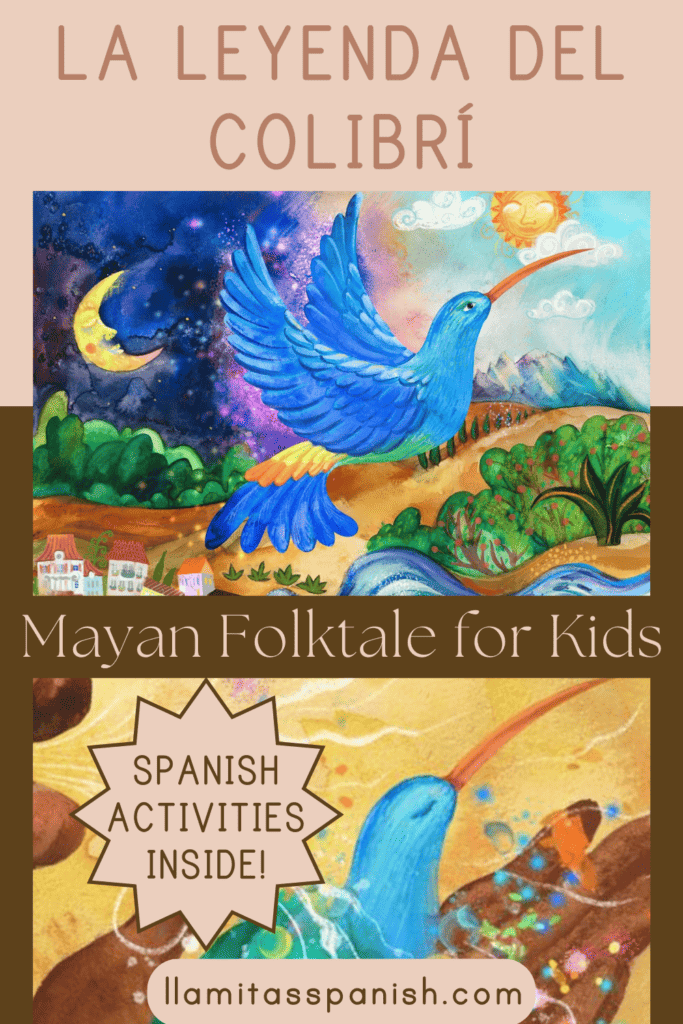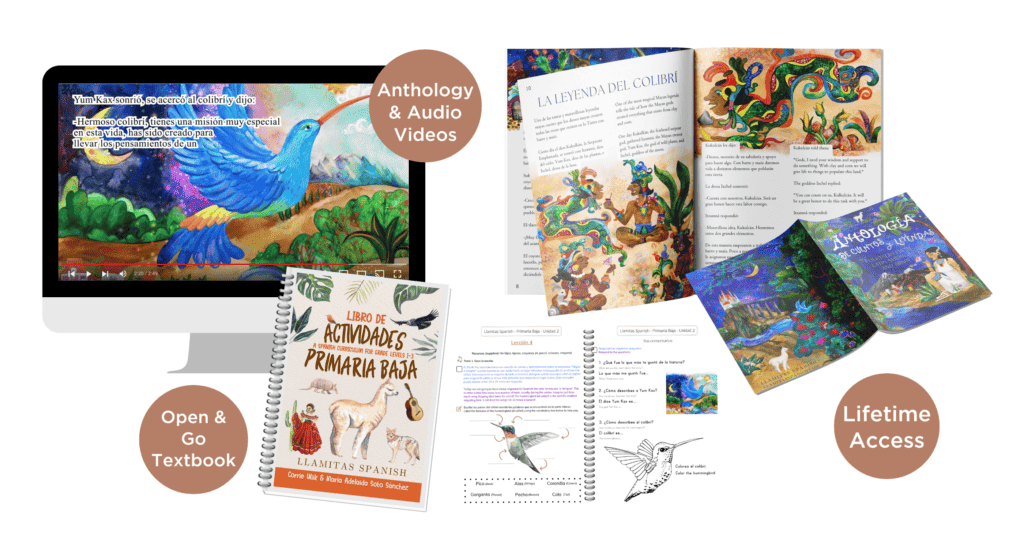In this post: Learn all about the Maya civilization and how you can teach Spanish lessons about the Maya to your kids.
When you’re teaching Spanish to your kids, you don’t want to skip out on incorporating Spanish and Latin American cultural lessons as well. Learning about Hispanic culture and history provides them with some context to the language they’re learning and where it comes from.
If you’re trying to think of some fun and exciting cultural lessons to include, learning about the Maya is a great option!
Ancient civilizations are a fascinating topic that kids often love to learn about, and the Maya were especially intriguing as one of the most advanced cultures in ancient times.
By adding some Maya themed lessons to your Spanish curriculum, you’ll easily be able to apply language lessons across subjects like history, geography, mythology, and more!
Keep reading to learn some fun facts about the Maya that you can use in your Spanish lessons.
Table of Contents
Who were the Maya?
The ancient Maya civilization (also sometimes called Mayan civilization) was a Mesoamerican civilization that existed from about 2000 BCE. The Maya were indigenous to Mexico and Central America. They were one of the most advanced cultures in North and South America in their time.
The Maya civilization’s influence began to decline during the 16th century due to the Spanish explorers and colonists (or conquistadores). However, there are still over six million Maya people still alive today, along with 31 Mayan languages still in use.
Where did the Maya live?
The ancient Maya lived in parts of modern-day Mexico, Guatemala, Belize, El Salvador, and Honduras.
The Maya region was made up of three main areas:
- Northern Lowlands: Located on the Yucatán Peninsula
- Southern Lowlands: Located in the Peten district of Guatemala and adjacent areas of southeastern Mexico, Belize, and northwestern Honduras
- Southern Highlands: Located in southern Guatemala
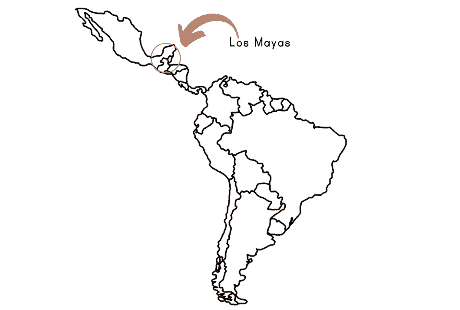
What were the Maya known for?
The Maya were known for their advanced writing and number systems, agricultural practices, calendars, astrology, and architecture. They built elaborate cities, pyramids, and temples, decorating them with intricate carvings.
Some of these structures have held up for centuries and can still be visited to this day, including the city of Chichén Itzá (located in present-day Yucatán, Mexico), one of the seven wonders of the world!
The Maya Writing System
Because of their advanced society, it makes sense that the Maya also developed their own way of writing. They were the only ancient civilization in the Americas to develop their own fully-fledged writing system.
The Maya script was “hieroglyphic” writing, also known as glyphs, made up of complex images representing animals, people, and gods, for example.
The writing system uses logograms (words) and syllabograms (sounds).
Logograms are a single glyph used to represent a word. Syllabograms are similar to syllables—they represent sounds that can be strung together to create a word. Some words could be written two ways, using either the logogram or syllabograms.

The Maya carved glyphs into stone and ceramics as well as creating books, called codices, using tree bark.
(Psst: In our Level 2 Spanish Curriculum, students will learn more in-depth about the Maya script and how it worked, with opportunities to learn a few glyphs and even create some of their own!)
The Maya Number System
The Maya also developed their own number system. It was a base-20, or vigesimal, system, meaning it’s based on the number twenty (instead of ten, like the decimal system).
It’s believed that the ancient civilizations developed their numerical systems by first counting with their fingers—or in the case of the Maya, their fingers and toes.
With their number system, the Maya also developed the concept of zero and place value.
The Maya numeral system was simple in that it was only made up of three symbols: A shell (representing 0), a dot (representing 1), and a bar (representing 5).
You can see a visual of the Maya number system in our lessons from Level 2:
Related post: Elementary Homeschool Spanish Curriculum
Mythology and the Maya gods
The Maya religion was polytheistic, meaning they worshiped many gods. In fact, the Maya worshiped about 250 different deities.
Animism was also an important part of the Maya religion, which is the belief that everything has a soul, including inanimate objects.
In Maya mythology, gods and goddesses often personified the forces of nature, such as rain and storms, as well as other aspects of human life, such as birth and death. While the gods were often revered by the Maya for their power and looked to for support, many were also believed to be ruthless—at times bringing pain and death.
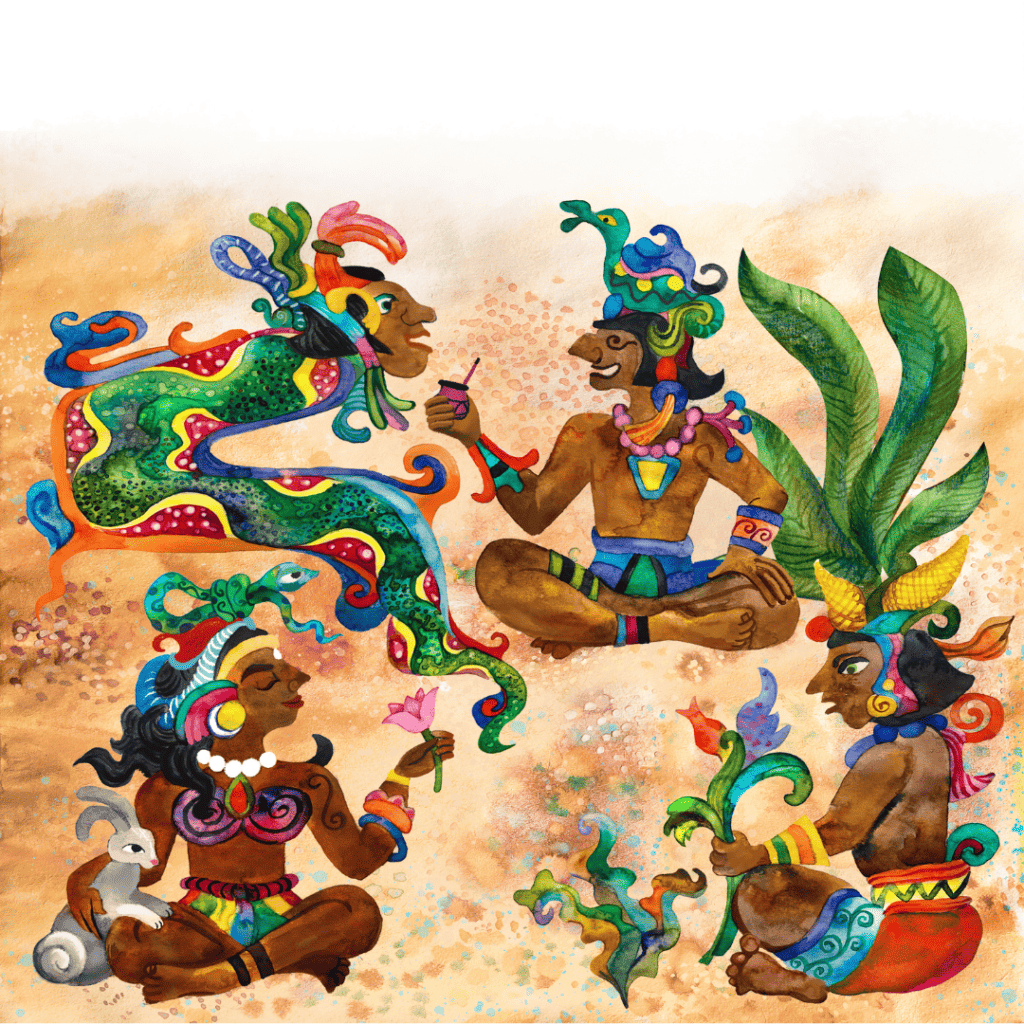
In our Llamitas Level 2 Curriculum, students will learn about four of these gods in the story, “La leyenda del colibrí”:
- Kukulkán: The feathered serpent god. This was the main god in the Maya religion, believed to bring storms, wind, and rain, as well as a symbol of life.
- Itzamná: The Maya creator god. Perhaps the most important god, Itzamná was considered the creator of the Maya culture, and was believed to have taught humans important skills (agriculture, science, art, etc.) and have healing powers.
- Yum Kaax: The god of wild plants. This Maya god was believed to be a protector of nature, including wild plants and animals. He was important to hunters and farmers, who believed he would help them.
- Ixchel: The moon goddess. This goddess is associated with cosmology, healing, and childbirth. She was important to pregnant women and those hoping to have children.
Much of what we understand about Maya mythology and religion today is known from the codices, which contained information about the Maya religion and rituals as well as astronomy and astrology.
La leyenda del colibrí
In our Llamitas Spanish Level 2 Curriculum, students will learn about a famous legend: La leyenda del colibrí, or The Legend of the Hummingbird. This classic cuento folklorico (folktale) is included in our anthology of six beautifully illustrated Latin American and Spanish folktales.
Based on Maya mythology and religion, this legend tells the story of how the Mayan gods created everything on earth using clay and corn, assigning tasks to all of the living things. When the gods were done, they realized they didn’t have a way to carry thoughts from place to place. So, they created a hummingbird from a beautiful jade stone and gave it this mission: to carry thoughts from one place to another.
Inspired by this legend, many people today still like to say that if you see a hummingbird, it means that someone is thinking of you. Now you know the story that this idea comes from!
Through the cuentos folklóricos in our anthology, like “La leyenda del colibrí,” students will learn Spanish grammar and build vocabulary and comprehension skills. Lessons in our Level 2 coursebook enrich these elementary Spanish stories with grammar activities, copywork, sequencing, and comprehension questions. Fun games and creative writing opportunities also support the stories.
Related post: Los pájaros: Spanish Bird Unit Study
Llamitas Spanish Curriculum
At Llamitas Spanish®, we believe wholeheartedly that learning Spanish should be an authentic and culturally rich experience. That’s why our Spanish curriculum is rooted in Hispanic culture and filled with authentic materials to support learning.
If you’re looking for a Spanish curriculum for your kids that will also teach them about Hispanic culture and history, look no further than our Llamitas Spanish Curriculum.
We have homeschool Spanish lessons designed for kids to learn naturally and across subjects, with two levels available and support for parents who may be learning Spanish alongside their kids.
The best part? All of the work is done for you—you just need to open and go!

